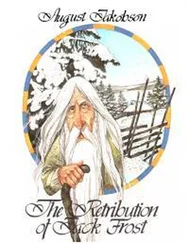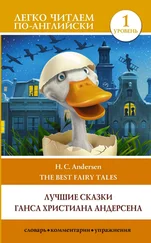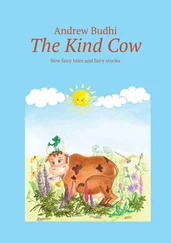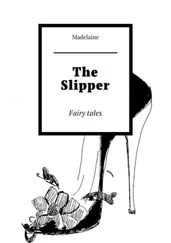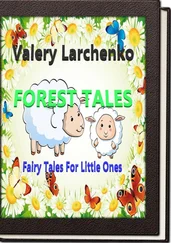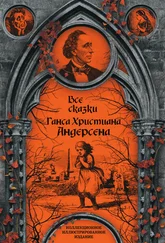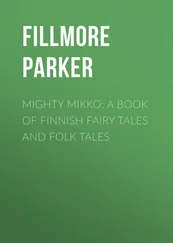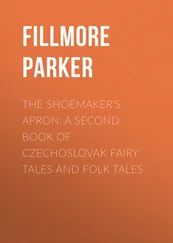Ганс Андерсен - Fairy Tales
Здесь есть возможность читать онлайн «Ганс Андерсен - Fairy Tales» весь текст электронной книги совершенно бесплатно (целиком полную версию без сокращений). В некоторых случаях можно слушать аудио, скачать через торрент в формате fb2 и присутствует краткое содержание. Жанр: Старинная литература, на английском языке. Описание произведения, (предисловие) а так же отзывы посетителей доступны на портале библиотеки ЛибКат.
- Название:Fairy Tales
- Автор:
- Жанр:
- Год:неизвестен
- ISBN:нет данных
- Рейтинг книги:4 / 5. Голосов: 1
-
Избранное:Добавить в избранное
- Отзывы:
-
Ваша оценка:
- 80
- 1
- 2
- 3
- 4
- 5
Fairy Tales: краткое содержание, описание и аннотация
Предлагаем к чтению аннотацию, описание, краткое содержание или предисловие (зависит от того, что написал сам автор книги «Fairy Tales»). Если вы не нашли необходимую информацию о книге — напишите в комментариях, мы постараемся отыскать её.
Fairy Tales — читать онлайн бесплатно полную книгу (весь текст) целиком
Ниже представлен текст книги, разбитый по страницам. Система сохранения места последней прочитанной страницы, позволяет с удобством читать онлайн бесплатно книгу «Fairy Tales», без необходимости каждый раз заново искать на чём Вы остановились. Поставьте закладку, и сможете в любой момент перейти на страницу, на которой закончили чтение.
Интервал:
Закладка:
Most anthologies of Andersen’s fairy tales and stories tend to present them chronologically, according to the dates they first appeared in Danish. This type of organization enables readers to follow Andersen’s development as a writer and to draw parallels with the events in his life, but that can be a disadvantage if critics and readers go too far in interpreting the tales autobiographically and tracing biographical details in his tales. For example, “The Ugly Duckling” is generally regarded as a representation of the trials and tribulations of the outsider Andersen, who had to overcome obstacles to reveal his aristocratic nature as a swan. “The Little Mermaid” has frequently been interpreted as a reflection of the unrequited love Andersen felt for Edvard Collin. “The Nightingale” mirrors the tenuous relationship between Andersen the artist and his patron the King of Denmark. There is undoubtedly some truth to these interpretations. All writing has psychological and biographical dimensions. But to relentlessly view most of Andersen’s tales as symbolic stories about his own life and experiences can diminish our appreciation of the depth and originality of many of his narratives.
At his best, Andersen was an unusually creative and sensitive writer whose imagination enabled him to transform ordinary occurrences and appearances into extraordinary stories that open new perspectives on life. He was not a profound philosophical thinker, but he had a knack of responding spontaneously and naively to the world around him, and he possessed a talent for conveying his wonder about the miracles of life through short narrative prose that could be awe-inspiring. Moreover, because he always felt oppressed, dominated, and misunderstood, he sought to assess and grasp the causes of suffering, and offered hope to his readers—a hope that he himself needed to pursue his dreams.
It thus makes sense to try to “categorize” Andersen’s tales in a non-traditional-that is, non-chronological-manner in order to try to appreciate some of the common themes that he tried to weave into his narratives time and again from 1835 to 1875. Though it is difficult to typify all his tales, a consideration of their common themes will allow for a broader and more critical appreciation of his works and might make some of his intentions clearer. I have divided the tales into the following categories: the artist and society; folk tales (the adaptation of folklore); original fairy tales; evangelical and religious tales; the anthropomorphizing of animals and nature; the humanization of toys and objects; and legends. There are, of course, overlapping themes and motifs, and a tale that appears in one category might have been included in another. Yet from the vantage point of these categories, Andersen’s tales may assume more relevance in a socio-cultural context. (See “Commentaries on the Tales” for more on each tale in this collection.)
THE ARTIST AND SOCIETY
One of Andersen’s most insightful and profound fairy tales, one that fully addresses his philosophy of art and the artist, is “The Nightingale”; it deserves to be placed first in any anthology of Andersen’s tales, followed by “The Gardener and the Gentry.” The first is clearly a fairy-tale allegory about the relationship of the artist to his patron; the second is a bitter, ironic story, also about patronage, but more specifically about folklore and the artist’s role in Denmark. While it is difficult to state which category of Andersen’s tales is most important, it is clear that there was an overriding concern in all his tales with the virtue of art and with the genuine storyteller as a cultivator of the social good. Andersen was writing at a time when the status of the professional and independent writer was in the process of being formed; before Andersen’s time, in Denmark and most of Europe it was virtually impossible to earn a living as a professional writer. Therefore, a writer had to have an independent income, trade, and profession, or a wealthy patron to support his work, and as there was no copyright law, a writer’s works were not fully protected. If a writer was dependent on a patron, he would be obliged to respect and pay attention to the expectations of his benefactor.
In “The Nightingale” and “The Gardener and the Gentry,” Andersen depicts the quandary of the artist who must suffer the indignities of serving upper-class patrons who do not appreciate his great accomplishments; in each case, the artist is a commoner or is common-looking but capable of producing uncommon art. For Andersen, uncommon art was “authentic” and “true” and stemmed from nature—that is, the natural talents of the artist. It is also essential and therapeutic, for humankind cannot do without it. In “The Nightingale,” the artist/bird heals the emperor, who realizes that mechanical art is artificial. In “The Gardener and the Gentry,” a more cynical Andersen depicts an arrogant, rich man and his wife who are unable to appreciate the originality of their innovative artist/gardener. Despite their ignorance and closed minds, true art succeeds, an indication of Andersen’s strong belief that the artist who is naturally endowed with talent will somehow shine forth.
One can always distinguish the true art from the false, and all the other tales in this category reflect Andersen’s constant re-examination of the nature of storytelling and the salvation it offered all people. In one of his last tales, “The Cripple” (1872), it is the fairy tale that enables a sick boy to regain his health; the story is a personal wish-fulfillment that transcends the conditions in Andersen’s life to become a universal narrative about art’s wondrous powers.
FOLK TALES (THE ADAPTATION OF FOLKLORE)
Many famous writers of fairy tales have made and continue to make extraordinary use of folk tales that were spread by word of mouth, and Andersen was no exception. In fact, most of Andersen’s early tales—including “The Tinderbox,” “Little Claus and Big Claus (1835),” “The Princess on the Pea,” and “The Traveling Companion” (1835)—are based on Danish folk tales that he had heard or read. He may have also used German and European tales collected by the Brothers Grimm as his sources; for instance, “The Tinderbox” and “Little Claus and Big Claus” are closely related to the Grimms’ “The Blue Light” and “The Little Farmer,” and other of Andersen’s tales show the influence of the Grimms. Knowing the sources enables us to study how Andersen appropriated and enriched these tales to reflect upon conditions in Danish society and upon the trajectory of his life. A good example is “The Traveling Companion,” an oral tale widespread in the Scandinavian countries and most of Europe. Folklorists refer to it as a tale type about the “grateful dead,” in which a dead man whose corpse is maltreated helps a young man who kindly protects the corpse from abuse. In Andersen’s version, the young man is devout and trusts the Lord and his dead father in Heaven to guide him through life. Andersen combines pagan and Christian motifs to illustrate the rise of a poor, naive man whose goodness enables him to marry a princess.
Andersen colored his tales based on folklore with his personal experience while using the folk perspective to expose the contradictions of the aristocratic class. In “The Swineherd” (1842) he remained close to the folk perspective, which he also developed in some of his original fairy tales, such as “The Emperor’s New Clothes.”
In Andersen’s early adaptations of folklore we see him in an “apprentice” phase as a writer of short prose. Taking the structure and contents of these tales as a basis, he developed his own style and tone, which was characterized by the simple folk mode of storytelling. Andersen’s style overall is really not so much “childlike” as it is “folksy,” and it was this blend of intimate, down-to-earth storytelling with folk motifs and literary themes that gave rise to some of his most significant fairy tales.
Читать дальшеИнтервал:
Закладка:
Похожие книги на «Fairy Tales»
Представляем Вашему вниманию похожие книги на «Fairy Tales» списком для выбора. Мы отобрали схожую по названию и смыслу литературу в надежде предоставить читателям больше вариантов отыскать новые, интересные, ещё непрочитанные произведения.
Обсуждение, отзывы о книге «Fairy Tales» и просто собственные мнения читателей. Оставьте ваши комментарии, напишите, что Вы думаете о произведении, его смысле или главных героях. Укажите что конкретно понравилось, а что нет, и почему Вы так считаете.

![Ганс Андерсен - Ганс Чурбан[другой перевод]](/books/95480/gans-andersen-gans-churban-drugoj-perevod-thumb.webp)

